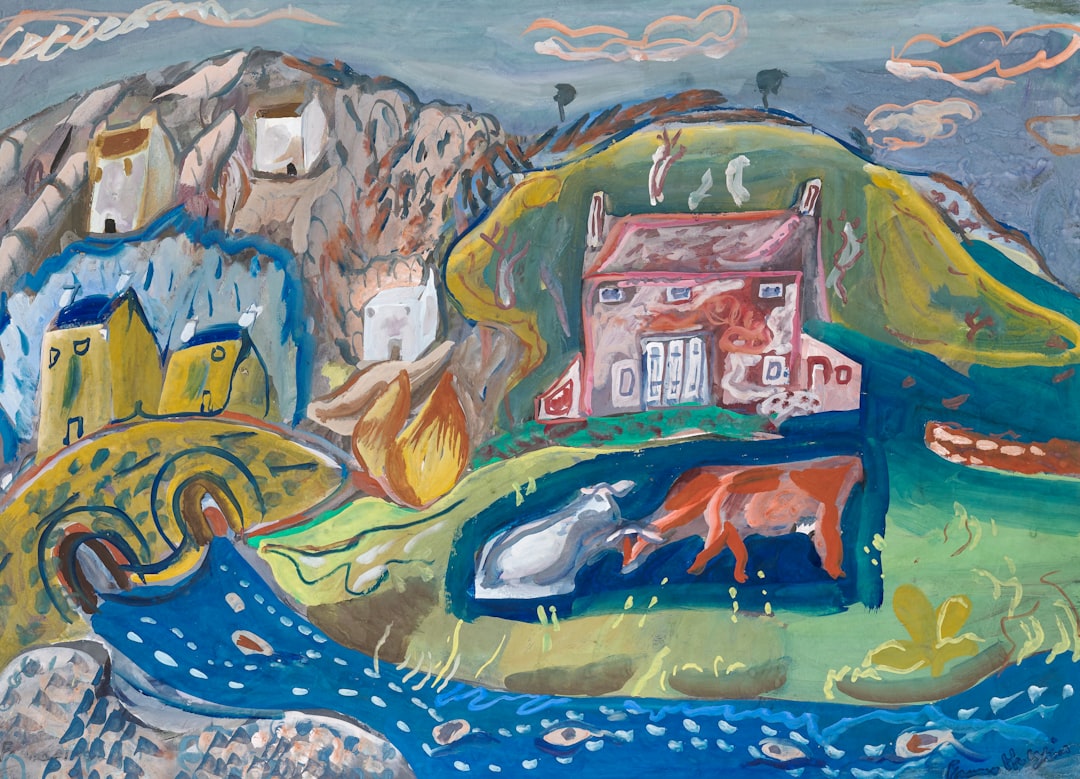When envisioning the cliché artist, images of berets, opulent oil paints, and lamplit muses may come to mind—not machines and computer systems. However, the 21st century is transcending expectations of who can make art, with Artificial Intelligence utilizing machine learning and algorithms to produce images based on a given style or prompt input. From modernism to Renaissance styles, AI can pick up patterns and transform them into something seemingly unique. Machine learning image generators are easily accessible to the public, with programs like DALL-E 2 and Midjourney available for free or through subscription. The technology has found its way onto Instagram feeds through a manifestation of the ever-popular selfie trend, TikTok challenges, and even magazine covers. Now, it has infiltrated another sphere, one considered a penultimate representation of human creative culture: the art museum.
Amsterdam’s Dead End Gallery has taken a giant leap for AI art—opening the world’s first AI-generated gallery. Featuring the work of 11 AI “artists,” whose personas are as machine-fabricated as their art, the pieces range from whimsical surrealism to pure “expressive” abstraction. The artists even have bios, drawing upon common artistic tropes as an explanation for their creative endeavors, such as desiring to “push the boundaries” or create “new forms of expression.” The generated personas have taken center stage in Dead End’s pursuits: one of the AI “artists” even named the monetary worth of the machine-learning pieces, between “€3,000 and €10,000.” However, are such prices valid, if human emotion and craftsmanship aren’t directly present? How can one categorize art made by a feeling-devoid machine, which views artistic elements merely as “data?”
The use of AI to create art has sparked debate about plagiarism. Since human-made artistic work is viewed as mere input by machines, distinct styles can be closely mirrored (or copied) by programs such as Midjourney. Users may even prompt an AI to outright mimic a specific style of a given artist. The experience of well-known artist Kelly McKernan proves this, telling the New Yorker in February 2023 that their name has been AI prompted over 12,000 times—without their consent. AI cannot experience the trials and tribulations of life, though it can attempt to mimic them through art prompts. The output, at times, can be eerie: containing creative elements, but lacking the emotional pull that has historically made art powerful.
What makes this AI different is that it's explicitly trained on current working artists. You can see below that the AI generated image(left) even tried to recreate the artist's logo of the artist it ripped off.
— RJ Palmer (@arvalis) August 14, 2022
This thing wants our jobs, its actively anti-artist. pic.twitter.com/4zXDeaIUzw
Refik Anadol, who used AI to create art based on 180,000 works from the Museum of Modern Art, is arguably a trailblazer, introducing AI work into the highbrow artistic sphere. “Refik Anadol: Unsupervised” used generators such as DALL-E 2 to create moving images that seemingly burst with life in MoMA’s lobby, morphing and flowing across a 24 by 24-foot screen with alien-esque fervor— unlike any substance or creature existent on planet earth. Anadol’s work transcends preconceived notions of AI-generated art, in that its context creates meaning. It takes up space in one of the world’s most heralded contemporary art museums, posing questions about the future of modern art in the digital age.
Taking over 200 years worth of MoMA’s art and redefining it, Anadol creates something almost-hallucinatory, difficult to place within solid reality. Perhaps, Anadol’s work mirrors how life (and art) can feel in the contemporary age—discombobulating and unsteady. Maybe the presence of AI in high art will maintain its status as a one-hit commentary provided by Anadol. Or, it will infiltrate itself fully and without the multifaceted discourse posed by the MoMA exhibit—a potential future that is concerning for the careers and opportunities of living, working artists.
11/12@refikanadol - @MuseumModernArt Unsupervised 🖼️
— Pablo (@pablorfraile) May 10, 2023
AI-driven reinterpretation of MoMA's collection, using machine learning to generate new perspectives on existing art, creating a unique dialogue between the past & the future in a dynamic way
🔗 https://t.co/xsWSVVWZNj pic.twitter.com/JZ5hpC5h25
For decades, there has arguably been no “right” or “wrong” in art—it is all a matter of expression. AI art is a whole new ballgame when viewed as a creative medium, though, especially considering its inherent inability to experience humanness and emotion. The philosophical position posed by Oscar Wilde, "Life imitates Art far more than Art imitates Life," has become complicated when pondering AI art in 2023. How can life imitate art, or vice versa, when the artist isn’t even alive, at all?

